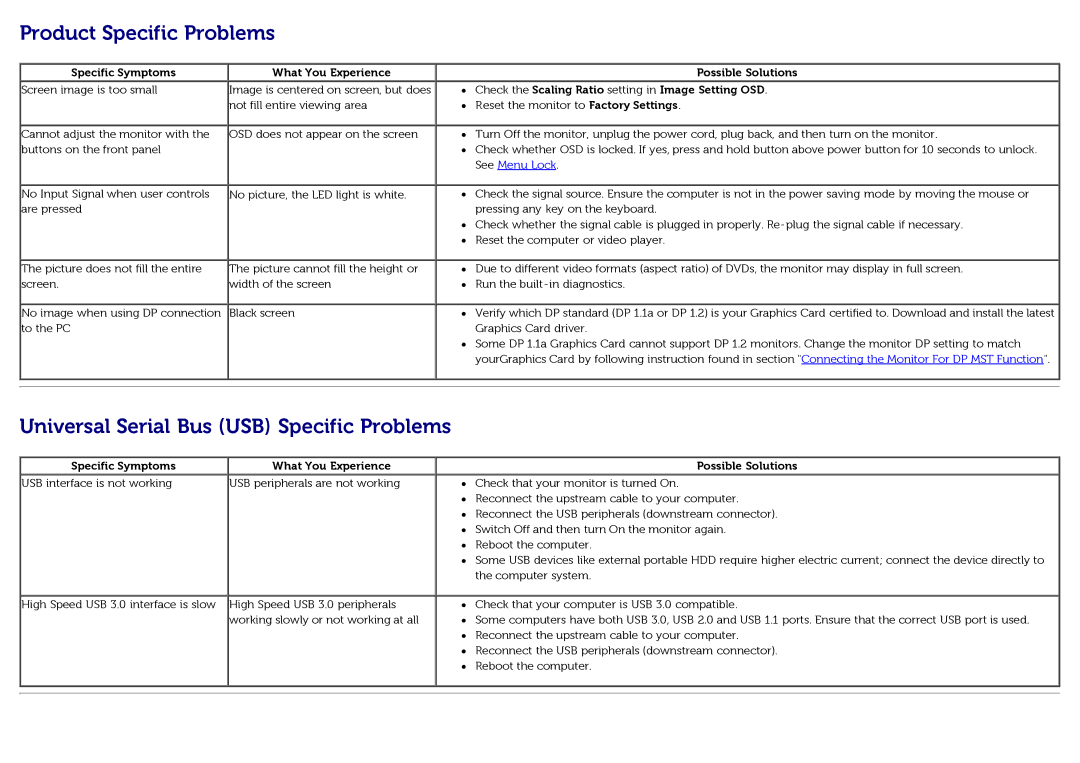
Product Specific Problems
Specific Symptoms
Screen image is too small
Cannot adjust the monitor with the buttons on the front panel
No Input Signal when user controls are pressed
The picture does not fill the entire screen.
What You Experience
Image is centered on screen, but does not fill entire viewing area
OSD does not appear on the screen
No picture, the LED light is white.
The picture cannot fill the height or width of the screen
Possible Solutions
Check the Scaling Ratio setting in Image Setting OSD.
Reset the monitor to Factory Settings.
Turn Off the monitor, unplug the power cord, plug back, and then turn on the monitor.
Check whether OSD is locked. If yes, press and hold button above power button for 10 seconds to unlock. See Menu Lock.
Check the signal source. Ensure the computer is not in the power saving mode by moving the mouse or pressing any key on the keyboard.
Check whether the signal cable is plugged in properly.
Due to different video formats (aspect ratio) of DVDs, the monitor may display in full screen. Run the
No image when using DP connection Black screen to the PC
Verify which DP standard (DP 1.1a or DP 1.2) is your Graphics Card certified to. Download and install the latest Graphics Card driver.
Some DP 1.1a Graphics Card cannot support DP 1.2 monitors. Change the monitor DP setting to match yourGraphics Card by following instruction found in section "Connecting the Monitor For DP MST Function".
Universal Serial Bus (USB) Specific Problems
Specific Symptoms | What You Experience | Possible Solutions |
USB interface is not working | USB peripherals are not working | Check that your monitor is turned On. |
|
| Reconnect the upstream cable to your computer. |
|
| Reconnect the USB peripherals (downstream connector). |
|
| Switch Off and then turn On the monitor again. |
|
| Reboot the computer. |
|
| Some USB devices like external portable HDD require higher electric current; connect the device directly to |
|
| the computer system. |
High Speed USB 3.0 interface is slow | High Speed USB 3.0 peripherals | Check that your computer is USB 3.0 compatible. |
| working slowly or not working at all | Some computers have both USB 3.0, USB 2.0 and USB 1.1 ports. Ensure that the correct USB port is used. |
|
| Reconnect the upstream cable to your computer. |
|
| Reconnect the USB peripherals (downstream connector). |
|
| Reboot the computer. |
